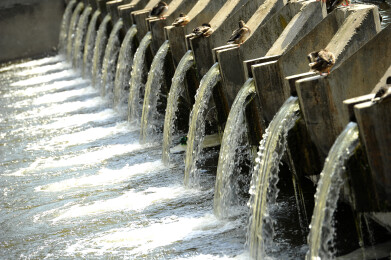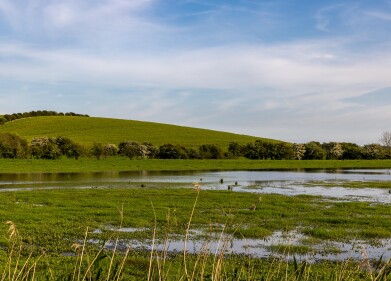River water monitoring
How dams can damage the health of rivers
Sep 13 2024
Dams have been built for thousands of years to serve various human needs such as irrigation, water storage, flood control, and hydroelectric power generation. While these structures offer significant benefits, their environmental costs are often overlooked. The construction of dams can severely damage the health of rivers, affecting ecosystems, biodiversity, and the quality of water. Understanding how dams alter natural river systems is crucial in balancing human needs with ecological sustainability.
One of the most profound ways that dams affect river health is by disrupting the natural flow of water. Rivers have seasonal flow patterns—often fluctuating between high and low flows—that are critical for maintaining ecosystems. For example, many aquatic species rely on seasonal flooding to spawn or access habitats. The natural flow also helps distribute nutrients, sediment, and organic matter throughout the river system.
Dams disrupt these natural flow regimes by controlling the volume and timing of water release. This artificial regulation often results in reduced downstream flows, permanently altering habitats and ecosystems. Fish and other aquatic organisms that depend on the river’s natural ebb and flow for reproduction and migration may find their life cycles disrupted. Additionally, the loss of periodic floods impacts floodplain ecosystems, which rely on inundation for nutrient replenishment and the maintenance of vegetation.
Another critical issue associated with dams is their ability to trap sediment. Rivers naturally carry sediment downstream, which is essential for maintaining riverbeds, deltas, and coastal areas. Sediment replenishes shorelines, creates fertile deltas, and provides essential nutrients to aquatic ecosystems. When a dam is built, it often traps a large portion of this sediment in the reservoir, preventing it from reaching downstream areas.
This lack of sediment downstream can lead to significant environmental problems. Without fresh sediment, riverbeds can erode, and deltas can shrink, threatening habitats and causing coastal erosion. For example, many deltas around the world are receding due to sediment trapping upstream by dams, leading to the loss of wetlands and increased vulnerability to storms and sea-level rise. Additionally, downstream erosion can destabilize riverbanks, leading to further degradation of aquatic habitats and the collapse of ecosystems that rely on a balanced sediment flow.
One of the most damaging effects of dams is the disruption of migratory patterns for fish and other aquatic species. Many river ecosystems are home to species that migrate upstream or downstream to reproduce. Salmon, for instance, migrate from the ocean to rivers to spawn, and their populations are often severely impacted by dam construction. While some dams attempt to mitigate this through fish ladders or other bypass systems, these solutions are not always effective, and many species are unable to complete their migration.
In addition to blocking migration routes, dams alter the temperature and oxygen levels of river water, further harming aquatic biodiversity. Water released from the bottom of reservoirs tends to be colder and lower in oxygen, creating inhospitable conditions for many species adapted to warmer, oxygen-rich waters. These altered conditions can lead to shifts in species composition, with more sensitive species declining or disappearing altogether, and more resilient, often non-native species taking their place. This loss of biodiversity weakens the overall health and resilience of the river ecosystem.
Dams also have a significant impact on water quality. When water is impounded in a reservoir, it often becomes stratified, with distinct temperature layers forming. This can lead to the depletion of oxygen in deeper layers, creating hypoxic conditions that can harm or kill aquatic life. When this low-oxygen water is released downstream, it can cause further degradation of water quality in the river, affecting both aquatic organisms and human populations that rely on the river for drinking water or agriculture.
Additionally, the stagnant water in reservoirs can promote the growth of harmful algal blooms. These blooms, often fueled by excess nutrients trapped behind the dam, can produce toxins that are harmful to both wildlife and humans. Algal blooms can lead to dead zones, where oxygen levels drop so low that aquatic life cannot survive. The presence of these blooms not only harms aquatic ecosystems but also poses risks to water supplies, making the water unsuitable for human use.
Rivers are dynamic, interconnected systems that support a range of ecosystems from their source to their mouth. Dams, however, fragment these ecosystems by creating physical barriers between upstream and downstream areas. This fragmentation can isolate populations of species, reducing their genetic diversity and making them more vulnerable to extinction. It also disrupts the natural connectivity of habitats, preventing species from moving freely to find food, shelter, or breeding grounds.
The creation of reservoirs behind dams can also lead to the flooding of forests, wetlands, and other important terrestrial ecosystems. This not only displaces wildlife but also releases large amounts of carbon dioxide and methane as flooded vegetation decomposes, contributing to climate change. The loss of these ecosystems further degrades the overall health of the river system.
Dams do not just affect wildlife; they also impact human communities that depend on rivers. Indigenous communities, in particular, have historically relied on rivers for fishing, agriculture, and cultural practices. When a dam is constructed, these communities often lose access to vital resources. The flooding of land for reservoirs can displace entire communities, forcing them to abandon their homes and traditional ways of life.
In addition, the changes in river flow and sediment transport caused by dams can reduce the fertility of downstream agricultural lands, affecting food security for people who rely on floodplain farming. These social and economic impacts add another layer of complexity to the environmental challenges posed by dams, underscoring the need for careful consideration of both human and ecological needs in river management.
While dams offer benefits like hydroelectric power, irrigation, and flood control, their environmental costs are significant. The good news is that there are alternatives and modifications that can mitigate some of these impacts. For example, "run-of-the-river" hydroelectric projects, which generate power without large reservoirs, can reduce the disruption of natural flows. Additionally, dam removal projects are gaining momentum in areas where the ecological costs of a dam outweigh its benefits.
Where dams must remain in place, improved management practices—such as periodic sediment flushing, environmental flow releases, and better fish passage solutions—can help reduce their impact on river health. Ultimately, maintaining healthy rivers requires a balance between human needs and the protection of vital ecosystems.
Digital Edition
AET Guide 2025
March 2025
Buyer's Guide Directory - Product Listings by Category - Suppliers Listings (A-Z) Air Monitoring - Stack Emissions Multi-Gas Analysis: OFCEAS<sup>®</sup> Technology Seduces the Market...
View all digital editions
Events
Mar 18 2025 Expo Santa Fe, Mexico
Mar 18 2025 Moscow, Russia
Mar 19 2025 Manila, Philippines
Mar 19 2025 New Delhi, India
Mar 20 2025 Guangzhou, China

.jpg)

-min.jpg)







.jpg)

.jpg)





